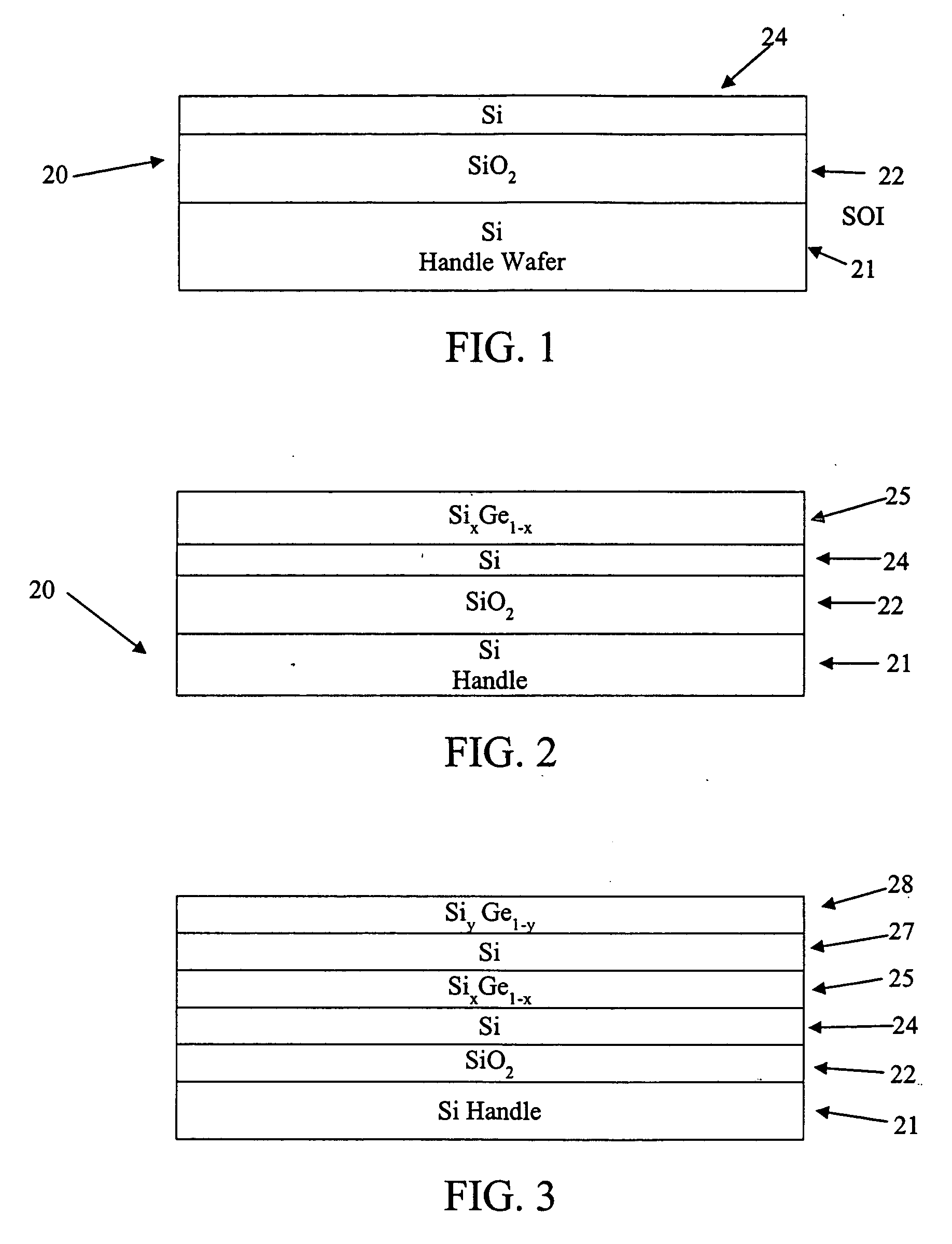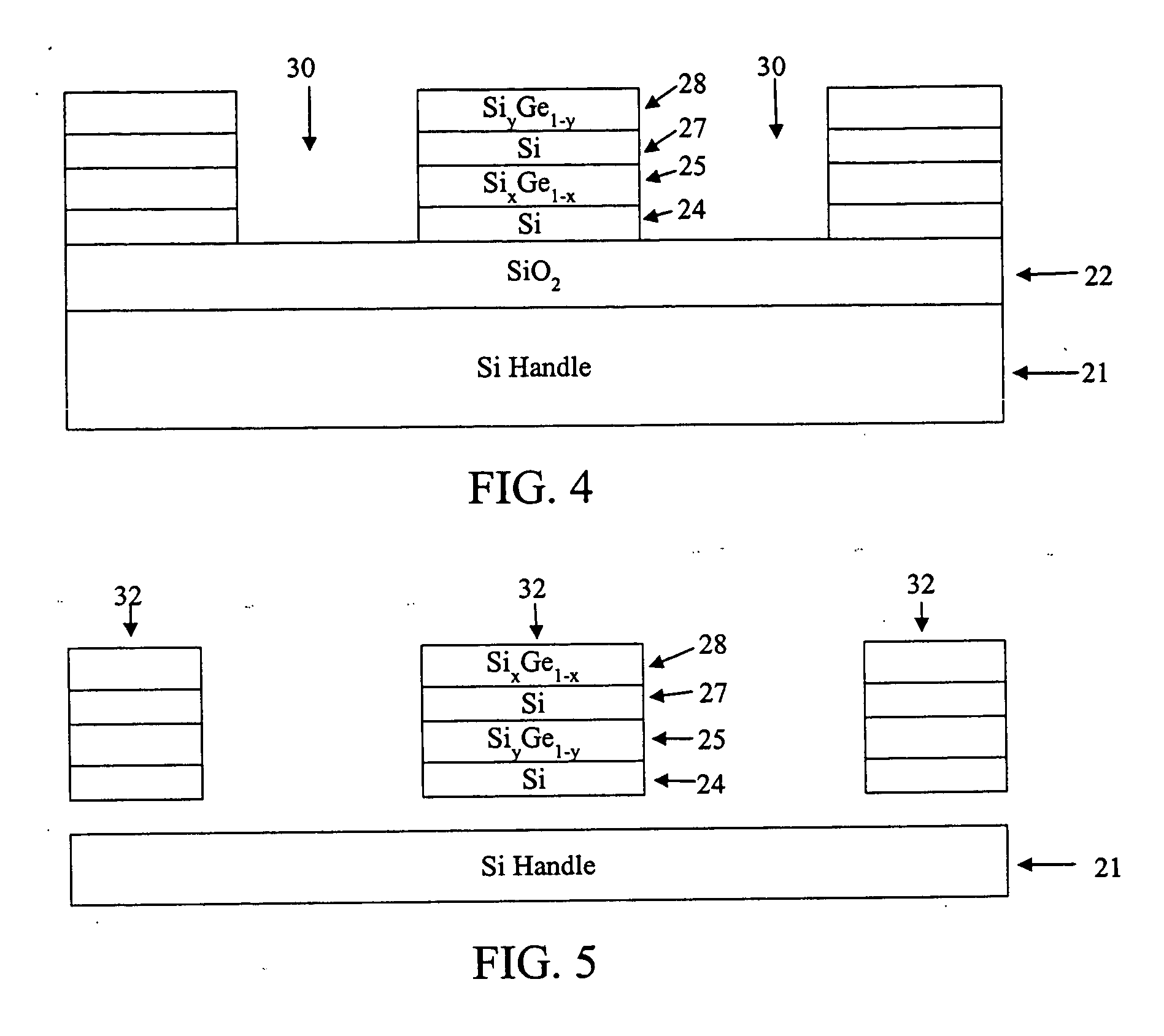Fabrication of strained heterojunction structures
a heterojunction structure and semiconductor technology, applied in the field of semiconductor processing, can solve the problems of difficult to have adjacent devices in different strain states, rough growth front, and high-quality strained silicon, and achieve the effects of improving carrier mobility, improving characteristics, and improving speed
- Summary
- Abstract
- Description
- Claims
- Application Information
AI Technical Summary
Benefits of technology
Problems solved by technology
Method used
Image
Examples
Embodiment Construction
[0030] The present invention provides a new approach for controlling strain in heterostructures. For purposes of exemplifying the invention, the following describes the production of silicon / silicon-germanium heterostructures which are formed on silicon-on-insulator (SOI) substrates and then released, but the invention may be implemented in any semiconductor system or other material system requiring strain control as discussed herein.
[0031] An initial SOI wafer is shown generally in cross-section at 20 in FIG. 1 and includes a crystalline silicon handle wafer 21, an insulating (sacrificial) layer 22 of SiO2, and a template layer 24 of crystalline silicon that is typically 10 to 100 nm thick. As shown in FIG. 2, an initial layer 25 of SiGe is grown epitaxially on the silicon template layer 24 by any suitable process, such as molecular beam epitaxy (MBE), chemical vapor deposition (CVD), sputter deposition, etc., with the SiGe layer 25 in a state of internal compressive strain as gro...
PUM
 Login to View More
Login to View More Abstract
Description
Claims
Application Information
 Login to View More
Login to View More - R&D
- Intellectual Property
- Life Sciences
- Materials
- Tech Scout
- Unparalleled Data Quality
- Higher Quality Content
- 60% Fewer Hallucinations
Browse by: Latest US Patents, China's latest patents, Technical Efficacy Thesaurus, Application Domain, Technology Topic, Popular Technical Reports.
© 2025 PatSnap. All rights reserved.Legal|Privacy policy|Modern Slavery Act Transparency Statement|Sitemap|About US| Contact US: help@patsnap.com



